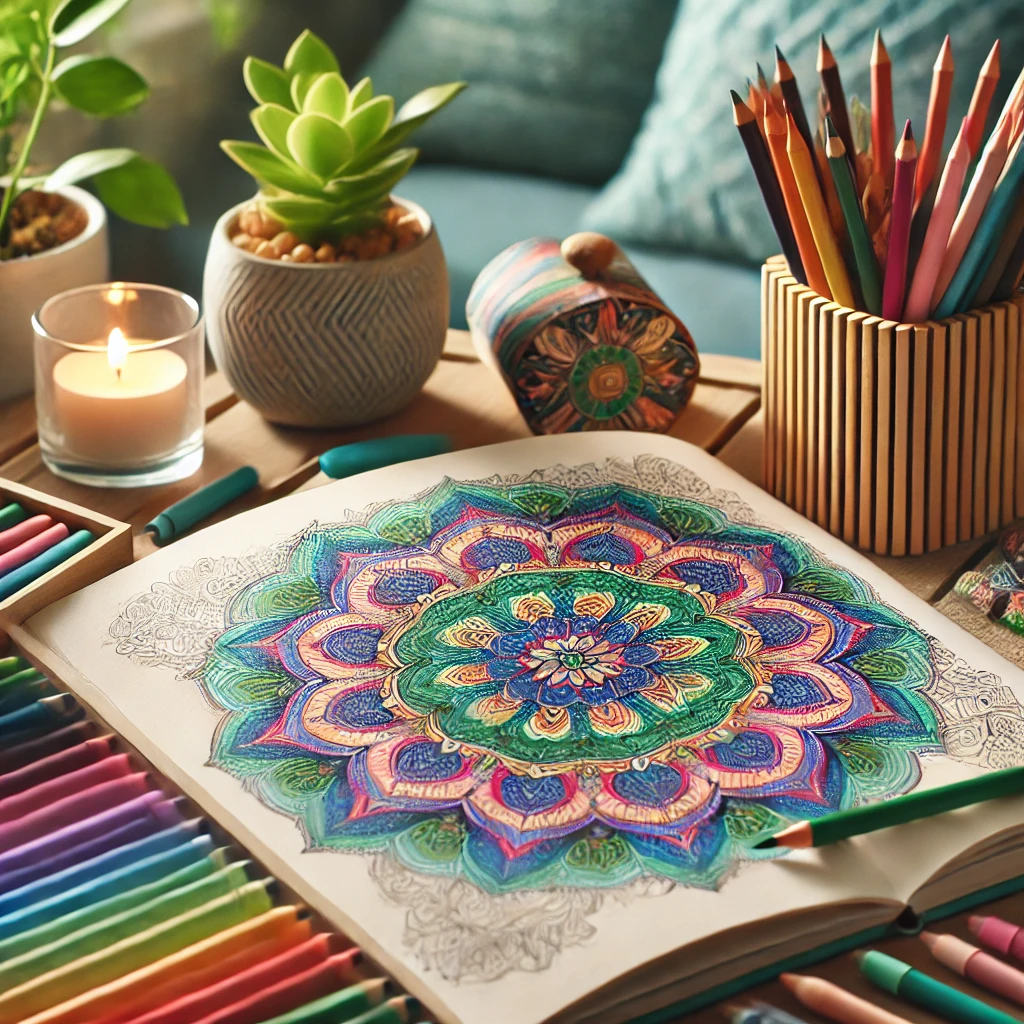
Coloring has long been associated with childhood creativity, but in recent years, it has emerged as a therapeutic tool for mental well-being. Known as “color therapy,” this practice engages your mind in a simple, meditative activity that fosters calm, focus, and emotional balance. In this blog, we’ll explore the science behind color therapy and how you can use coloring to improve your mental health and emotional well-being.
What Is Color Therapy?
Color therapy, or chromotherapy, is the use of colors to influence mood and emotions. While traditional color therapy focuses on exposing individuals to specific hues to promote balance, modern interpretations have extended to activities like coloring. Engaging with vibrant shades and intricate designs can have a profound impact on your mood and mental clarity.
How Coloring Improves Mental Health
- Reduces Anxiety and Stress
Focusing on coloring quiets the mind and redirects negative thoughts. The repetitive motion of coloring is similar to mindfulness exercises, helping to lower anxiety levels. - Enhances Focus and Concentration
Choosing colors and staying within lines engages the brain’s logic and creativity, improving cognitive focus and problem-solving skills. - Boosts Emotional Resilience
Coloring allows you to express your emotions through color choices, acting as an outlet for stress and fostering emotional resilience. - Stimulates Positivity
Bright and warm colors like yellow, orange, and pink are associated with happiness and energy, while cool tones like blue and green evoke calmness and serenity.
The Role of Color in Emotional Well-Being
Different colors have unique psychological effects. Here’s a quick guide to how colors can influence your mental state:
- Red: Boosts energy and confidence but should be used sparingly to avoid overstimulation.
- Blue: Calms the mind and promotes relaxation.
- Green: Balances emotions and fosters a connection to nature.
- Yellow: Encourages happiness and positivity.
- Purple: inspires creativity and introspection.
Tips for Using Coloring as Color Therapy
- Choose Designs That Resonate with You
Mandalas, floral patterns, or abstract art are excellent for encouraging creativity and focus. - Experiment with Color Palettes
Use bright, cheerful tones to lift your mood or soothing shades for relaxation. - Incorporate Mindfulness
Focus on the process of coloring rather than the end result. Let go of perfection and immerse yourself in the rhythm of the activity. - Make It a Daily Practice
Dedicate even 10 minutes a day to coloring to experience its therapeutic benefits consistently.
Explore Color Therapy with Digital Coloring Books
At Coloring Booknest, we offer a variety of digital coloring books that combine the benefits of color therapy with the convenience of modern design. Choose from themes that inspire calm, joy, or creativity and start your journey to better mental well-being today.
Final Thoughts
Coloring isn’t just a pastime; it’s a simple yet effective way to nurture your mental health. By using color therapy techniques, you can enhance your mood, reduce stress, and cultivate a more balanced emotional state. Ready to start your color therapy journey? Grab your favorite coloring tools and let the healing begin!




